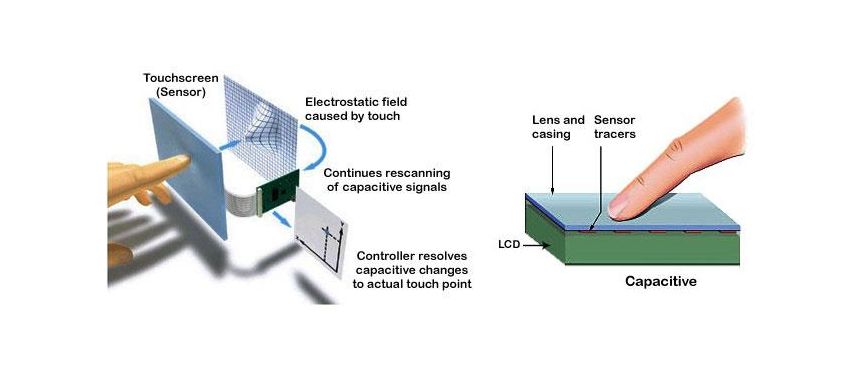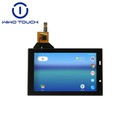How the touch screen works:
Touch screens work using electricity. The screen is made of glass, which is an insulating material - it cannot carry an electric current. Therefore, the surface of the screen is coated with a thin layer of a conductive material, such as ITO. This option was chosen because it is transparent.
The conductive layer is connected to a low voltage, so for a short period of time there is a tiny current on the screen. This leaves it with a small charge.
When your finger touches the screen, some of the small charge flows onto the screen. Don't worry - the voltage and charge are too small to give you an electric shock. A sensitive detector at the edge of the screen detects which point on the screen has lost its charge, so you know which point has been touched.

Why are touch screens popular?
Touch screens are popular for several reasons. For starters, the screen can be used as a keyboard and a display. Using the same space for multiple purposes means you can have a larger display. As a good example, think of the original Blackberry smartphones. They required a traditional physical keyboard to work, so the display only took up half of the device. Today's smart phones, on the other hand, do away with the traditional physical keyboard and have a larger, clearer display.
Another reason to move to touch screens is that they last longer. Physical buttons require small parts to work. These parts can wear out over time, causing the buttons to stick, stop working, or fall off. In contrast, touchscreens can be touched millions of times.
The smooth surface of a touchscreen makes it easier to clean than a traditional keyboard.
Common application areas for touchscreens include, but are not limited to, the following:
1. Smartphones and tablet PCs: The application of touchscreens was initially focused on smartphones and tablet PCs, which usually use capacitive touchscreens that allow users to touch the screen to complete a variety of operations, such as clicking, dragging, sliding, etc., which greatly improves the user's operating experience.
2. Game consoles and entertainment equipment: touch screen is also used in game consoles and entertainment equipment, such as large-scale touch screen game consoles, multimedia display equipment. These devices usually use resistive touch screen, which can achieve multi-touch and accurate touch operation, providing users with a richer entertainment experience.
3. Industrial control and automation equipment: touch screen in industrial control and automation equipment has also been widely used. For example, in the production line, the touch screen can be convenient for equipment operation and monitoring, which improves the production efficiency and quality, and reduces the work intensity of the operators.
4. Medical and Rehabilitation Equipment: Touch panels are also widely used in medical and rehabilitation equipment. For example, in the medical diagnostic system, the touch screen can be easily operated and view the diagnostic results, which improves the accuracy and efficiency of medical work and also facilitates the treatment of patients.
5. Education and training equipment: touch screens are also widely used in the field of education and training. For example, in the teaching interaction, through the touch screen can achieve the interaction between students and teachers and the operation of courseware, improve the teaching effect and student participation.




